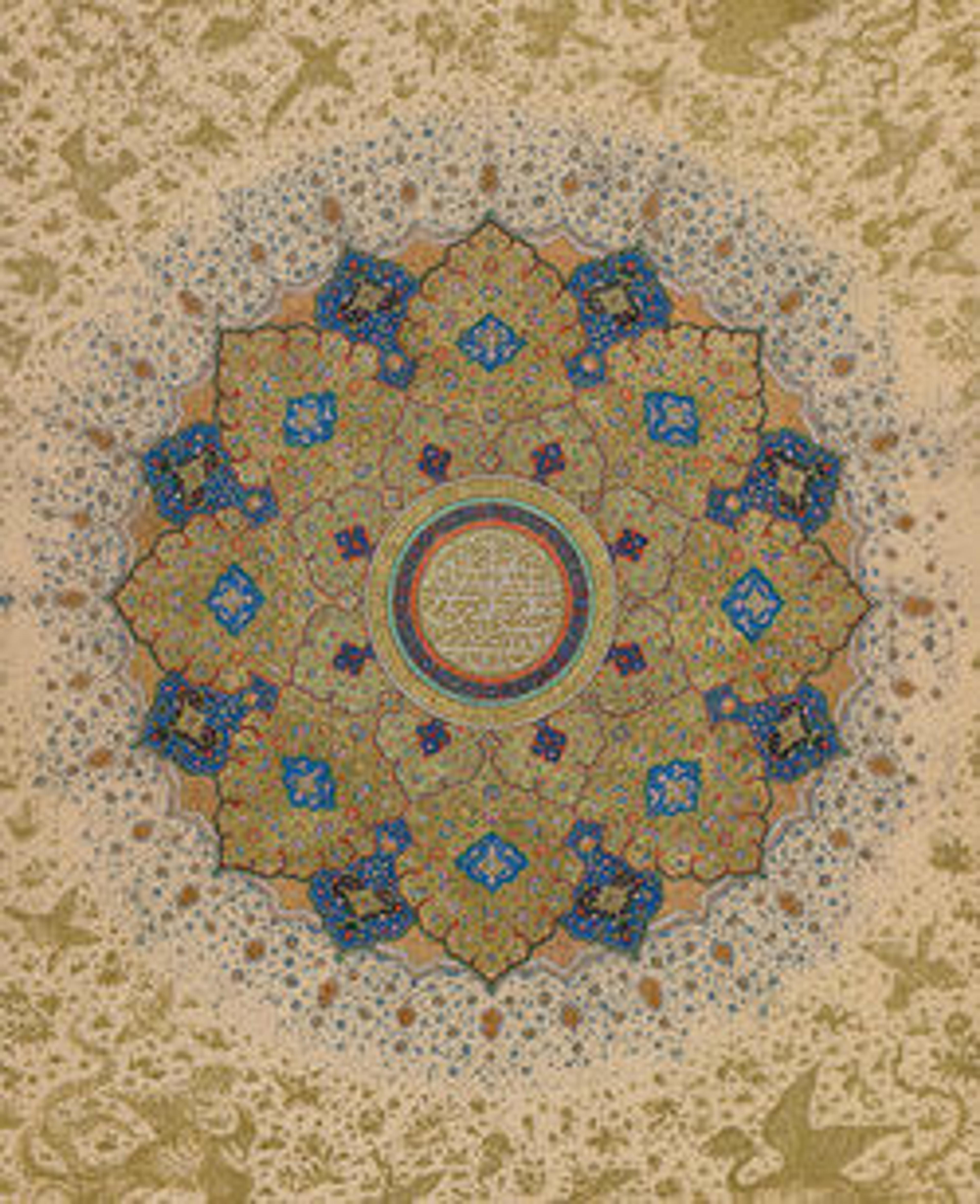Tile From an Inscriptional Frieze
Artwork Details
- Title: Tile From an Inscriptional Frieze
- Date: dated 707 AH/1308 CE
- Geography: From Iran, Natanz
- Medium: Stonepaste; underglaze painted in blue, luster-painted on opaque white ground, modeled
- Dimensions: H. 15 in. (38.1 cm)
W. 15 in. (38.1 cm) - Classification: Ceramics-Tiles
- Credit Line: Gift of Emile Rey, 1912
- Object Number: 12.44
- Curatorial Department: Islamic Art
Audio
6710. Overview: Ilkhanid Tiles, Part 1
DENISE MARIE TEESE: Hello, my name is Denise Marie Teese and I'm a Research Assistant in the Department of Islamic Art. What we're looking at here in this case is a group of Ilkhanid period tiles. In the luster glaze technique, there is a thin layer of metal that is left on the tiles, so you get this beautiful kind of golden sheen across the surface of the tile. So we have to try to imagine these tiles in their original context. As you notice, many of these tiles are covered with inscriptions and they would have originally been in a frieze, running across the length of a wall. And that inscriptional frieze would have been at eye level so you would be able to appreciate… the small details in the tile. In fact, on one tile in this case, if you look closely you'll see there's very small birds alighting on the letters themselves; little storks and other kinds of sparrows. That probably was within a tomb complex, So the souls of the residents of paradise are likened to small birds. And so that's where, perhaps, this imagery is coming from.During the Ilkhanid period, they loved to cover the walls with these geometric tiles, and they would combine different shapes. So just imagine walking into this room that was covered with gorgeous, glittering tiles. It must have made quite an impression on the visitor.
NARRATOR: Luster ware ceramics are specifically identified with Islamic Art – and you’ll find them throughout these galleries. If you haven’t already heard about this technique, press PLAY.
Listen to more about this artwork
More Artwork
Research Resources
The Met provides unparalleled resources for research and welcomes an international community of students and scholars. The Met's Open Access API is where creators and researchers can connect to the The Met collection. Open Access data and public domain images are available for unrestricted commercial and noncommercial use without permission or fee.
To request images under copyright and other restrictions, please use this Image Request form.
Feedback
We continue to research and examine historical and cultural context for objects in The Met collection. If you have comments or questions about this object record, please complete and submit this form. The Museum looks forward to receiving your comments.
